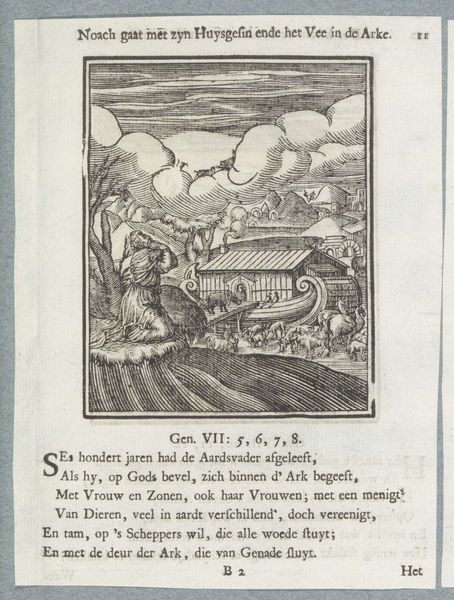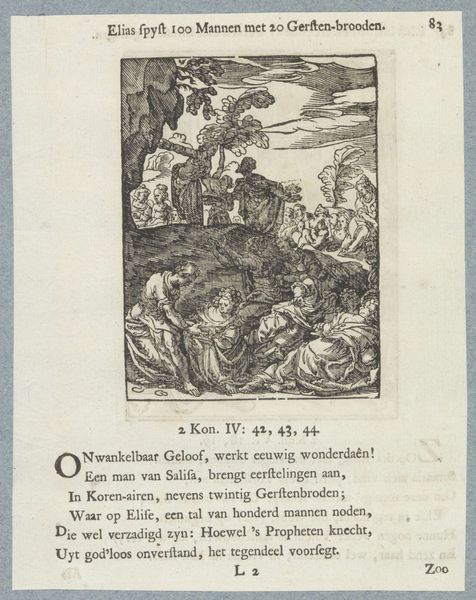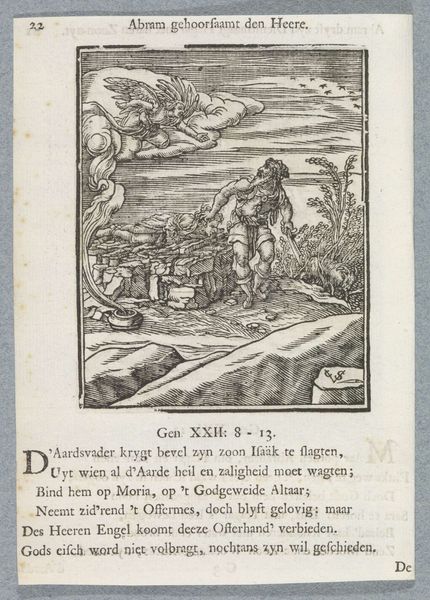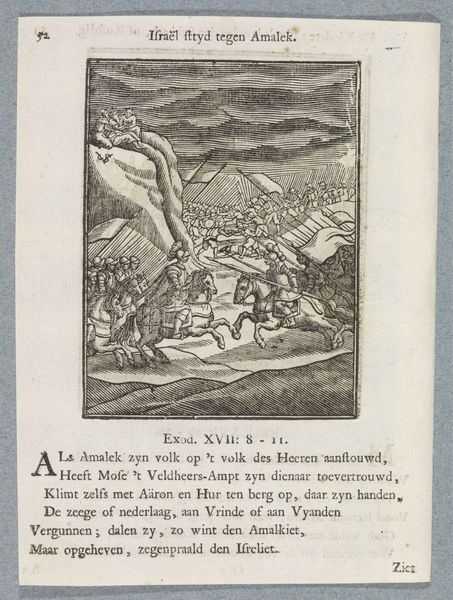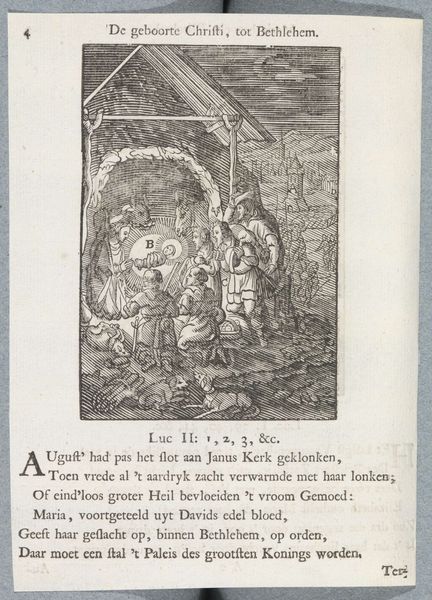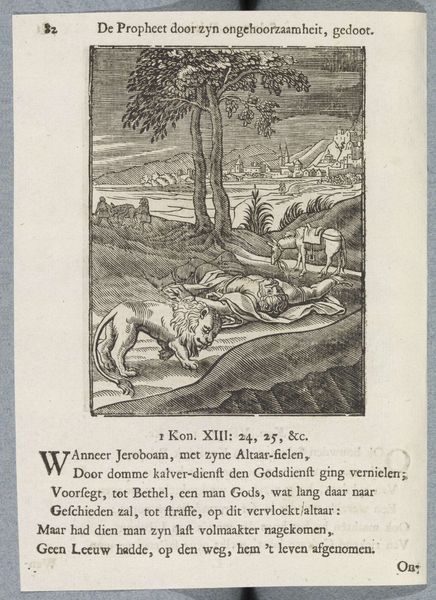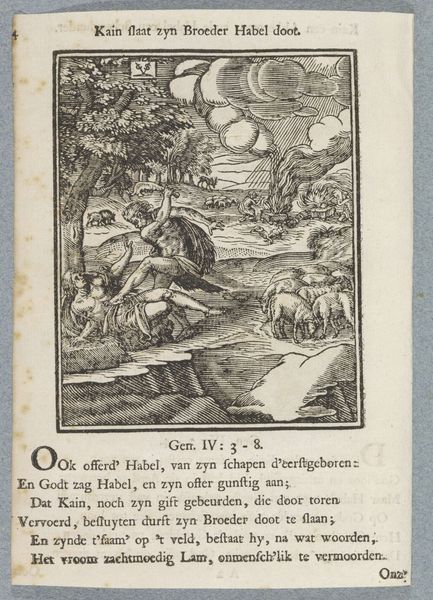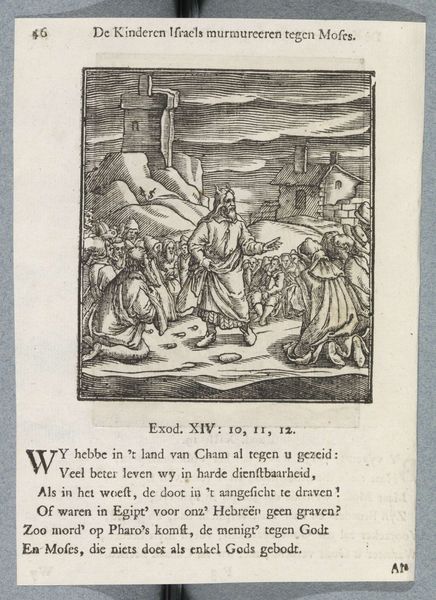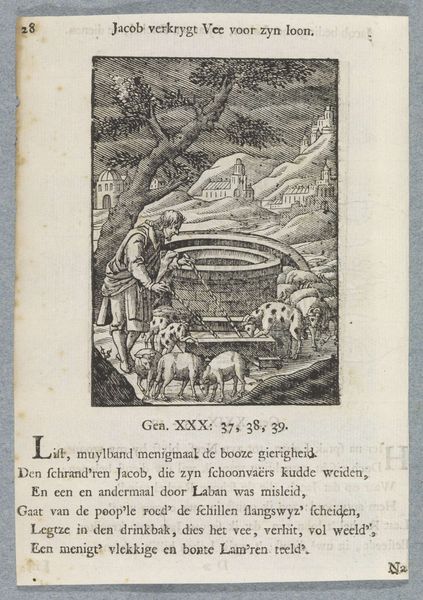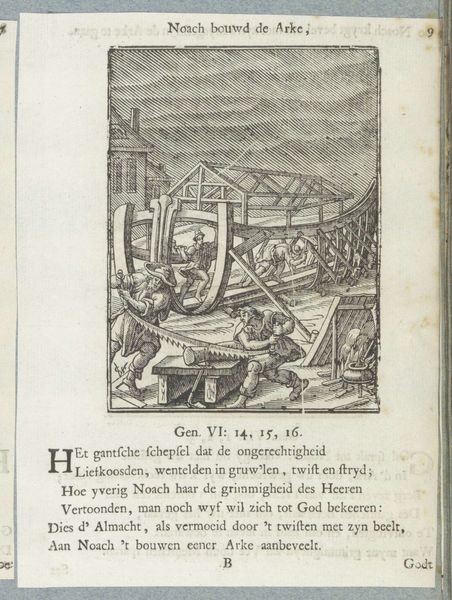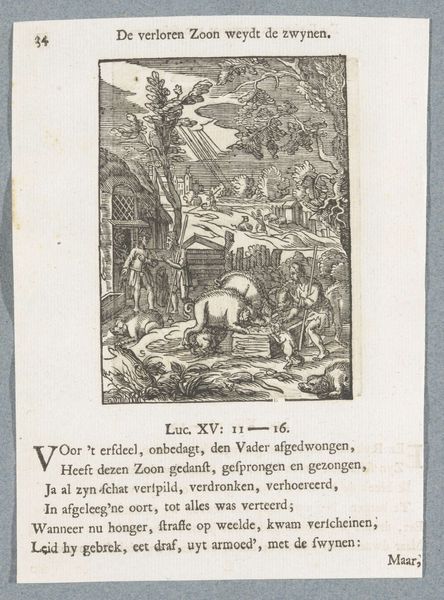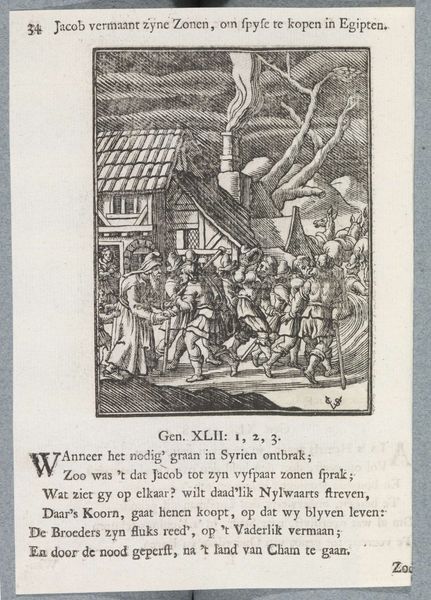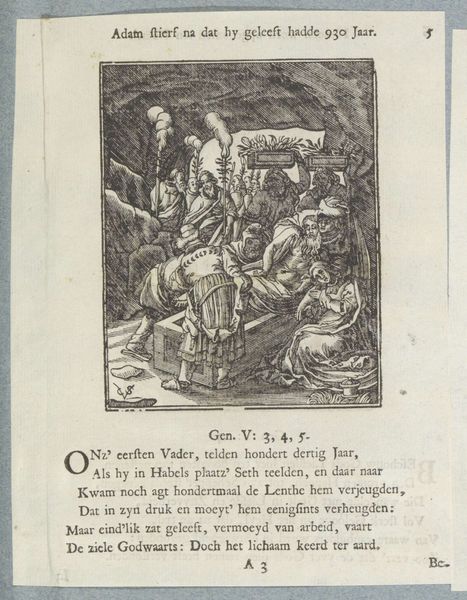
#
comic strip sketch
#
sketch book
#
personal sketchbook
#
sketchwork
#
journal
#
pen-ink sketch
#
pen and pencil
#
sketchbook drawing
#
storyboard and sketchbook work
#
sketchbook art
Dimensions: height 109 mm, width 87 mm, height 172 mm, width 127 mm
Copyright: Rijks Museum: Open Domain
Editor: Here we have Christoffel van Sichem II’s "Zondvloed," or "The Flood," a sketch dating roughly from 1645 to 1740, now held at the Rijksmuseum. It depicts a chaotic scene of the deluge, rendered in what looks like pen and ink. What stands out to me is the stark contrast between the desperation of the figures in the water and the relative calm of the ark. How do you interpret this work? Curator: Well, seeing this as a sketch, we must consider the economic and material conditions of its creation. Was paper readily available? What quality of ink did van Sichem have access to? The level of detail achieved despite apparent limitations suggests a practiced hand and perhaps a deliberate choice of medium for efficient communication, given the religious text that goes along with it.. What do you make of that juxtaposition? Editor: That's fascinating! So the sketchiness isn’t necessarily a lack of skill, but perhaps a choice driven by material constraints. It makes me wonder, how accessible would this image have been to the common person? Was it meant for mass consumption, or a more private, perhaps even scholarly, audience? Curator: Precisely. Consider the labor involved in producing and distributing prints at this time. Woodcuts, like this, could be reproduced more easily than engravings. Does the religious context suggest a specific intended market or audience, do you think? Who would have been consuming this depiction of the Flood? How might its interpretation vary among different social groups? Editor: Thinking about it, its likely for common folk, using the image as a visual guide in conjunction with bible study, even among the illiterate. I suppose looking at art in terms of material reality can actually enhance the cultural appreciation. Curator: Exactly! Focusing on the process reveals that art is intertwined with both labor and the accessibility afforded by materials. We can then use all of these as a point to ask more cultural questions about it. Editor: It’s been really helpful to have this materialist perspective, reframing my view of the piece as not just a work of art, but as a product of its time.
Comments
No comments
Be the first to comment and join the conversation on the ultimate creative platform.
